And then there were four . . . Emirates Team New Zealand revealed its second generation AC75 to the world at its base in Auckland’s Viaduct on Thursday.
Christened ‘Te Rehutai’ by Lady Margaret Tindall, it is the boat that will be used to defend the 36th America’s Cup presented by Prada in just over 100 days’ time.
Te Rehutai meaning: ‘Where the essence of the ocean invigorates and energises our strength and determination’.
As we have seen with the three challenger second generation hulls, there is plenty that is different looking at the overall shape of Te Rehutai.
Not a traditional looking hull shape which points to the clear aerodynamic emphasis given to the design.
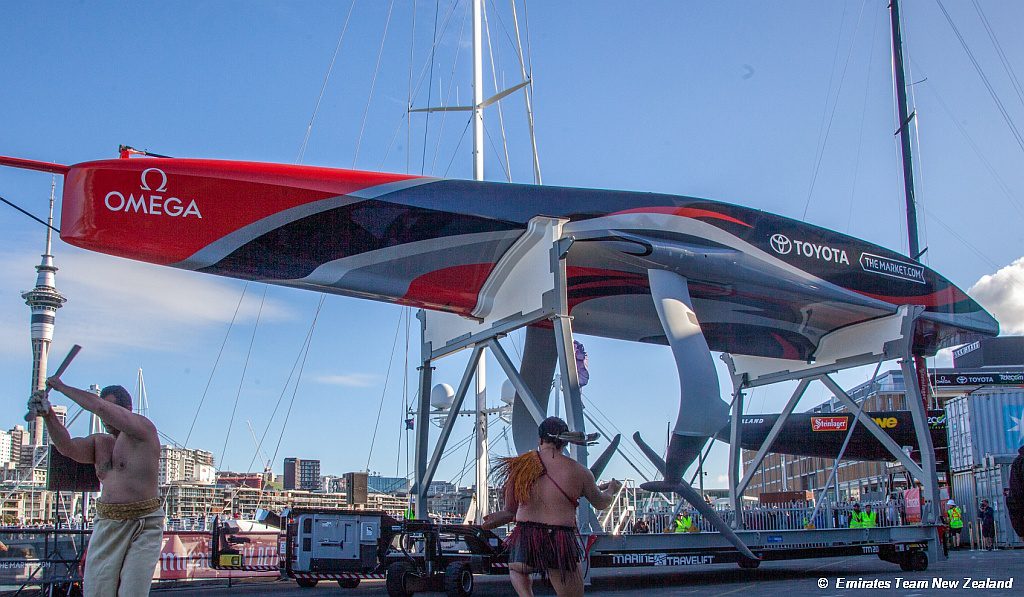
Dan Bernasconi, Head of Design, said: “We’ve been searching for the perfect balance between hydrodynamic and aerodynamic performance.”
“An AC75 that was optimised purely to accelerate and take-off would look very different to one which was optimised for steady-flight – and that’s reflected in the huge variation we see between our Competitors’ yachts in the fleet.”
“Te Rehutai is designed to excel in both domains – the water and the air – and we’re confident she’ll be competitive across the range of wind-speeds we may see in the America’s Cup.”
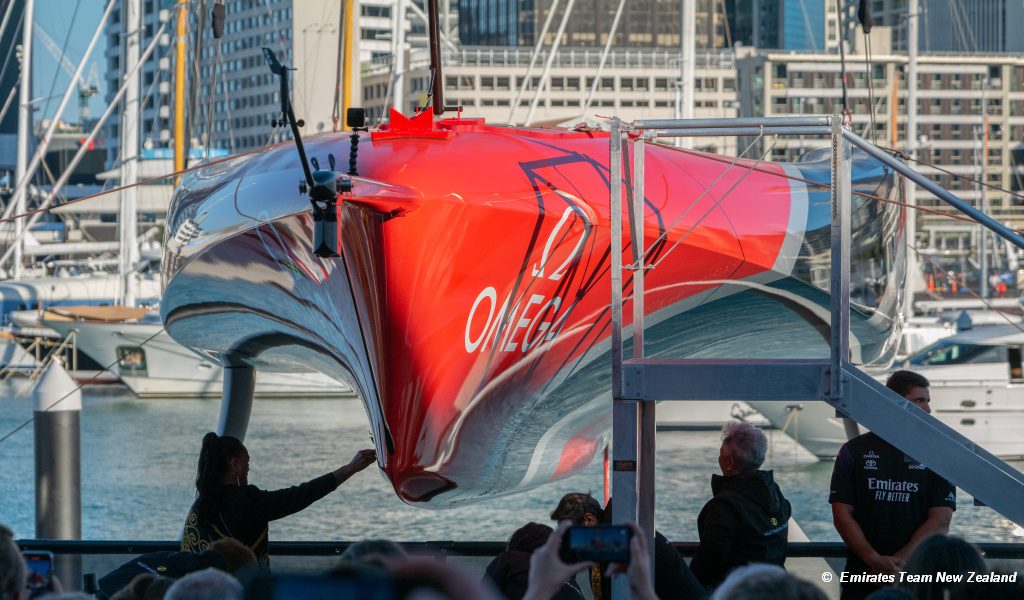
Te Rehutai has followed the more exaggerated flared bow design of the challengers, particularly the American Magic boat, Patriot.
And a more prominent and wider skeg also runs the length of the hull, although with apparently less rocker than Luna Rossa and Patriot, and it does not continue all the way to the stern as with the Italian and British second hulls.
The Kiwi team have not, as yet, released any detailed shots of the deck layout in the images sent out to the media!
In the quickly cropped video, it is clear that the crew pits are right out to the gunwales, but why the shyness, have they rearranged the grinding/steering positions?
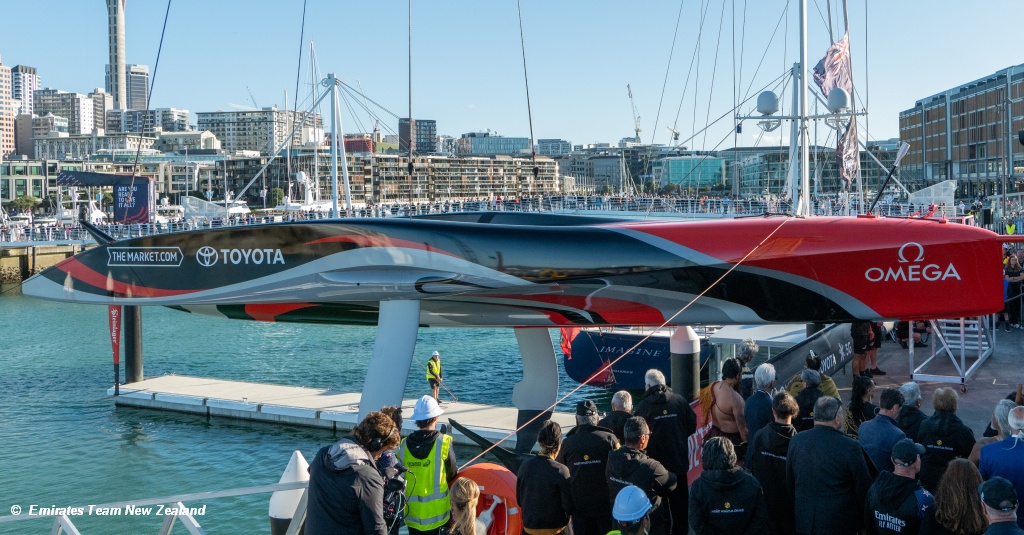
One stand-out feature at the roll-out were the flat foils, with small wing tips, that were mounted to be used for the initial testing.
ETNZ has generally used anhedral angled foils – downward angle from horizontal – although their test boat used a number of different design varients.
These also seem to be mounted further to the rear of the foil arms than usual, and use one continuous flap across the full width of the foil.
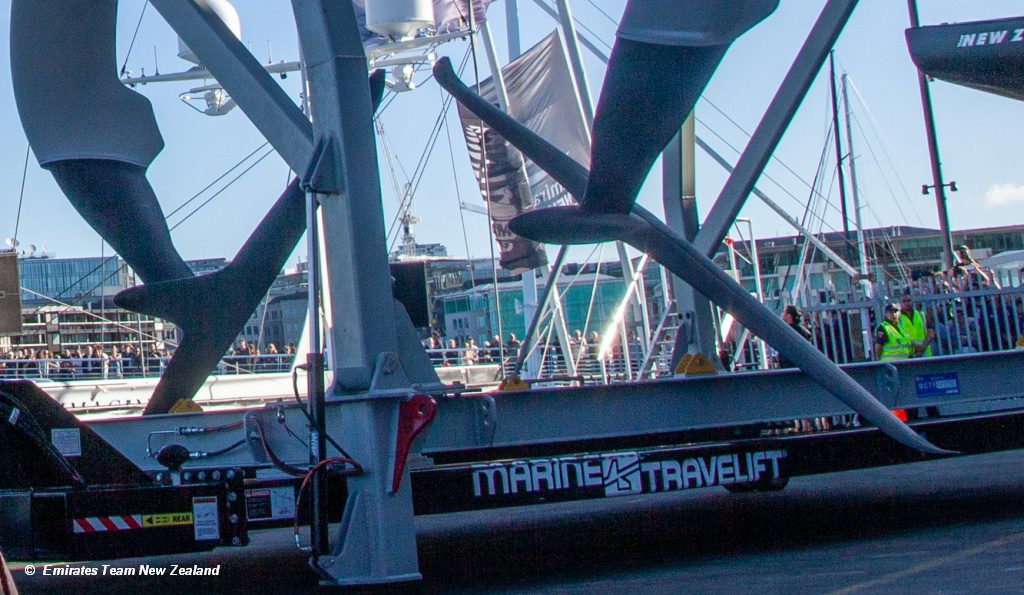
There also appears to be a difference between the port and starboard foils at the junction with the foil arm – one a delta wing, the other a bulb shape.
The foils, with their critical stabilisation control function, are proving to continue to be a major area of experimentation for the teams.
The British team have also been switching wing foils on their second boat recently, but they all have to bear in mind the limited number they are allowed.
Their racing foil set and four other foils which can be individually different or paired.

The milestone that any launch signifies is the handover from the designers and the boat builders to the sailing team – the ultimate client.
An exciting occasion for the man that will take the wheel, Peter Burling.
“Getting a new toy is always exciting, but we are pretty much past the point of excitement already as the next 2 weeks are some of the most crucial for the campaign in terms of continuing our development and getting ready to race for the first time in a matter of weeks.”
Related Post:

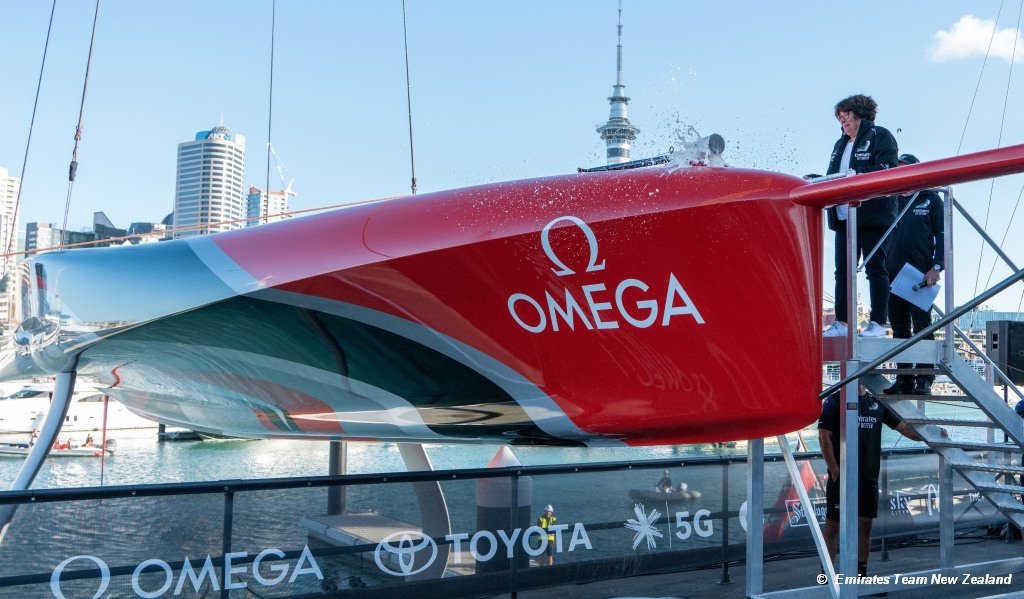
 RSS – Posts
RSS – Posts